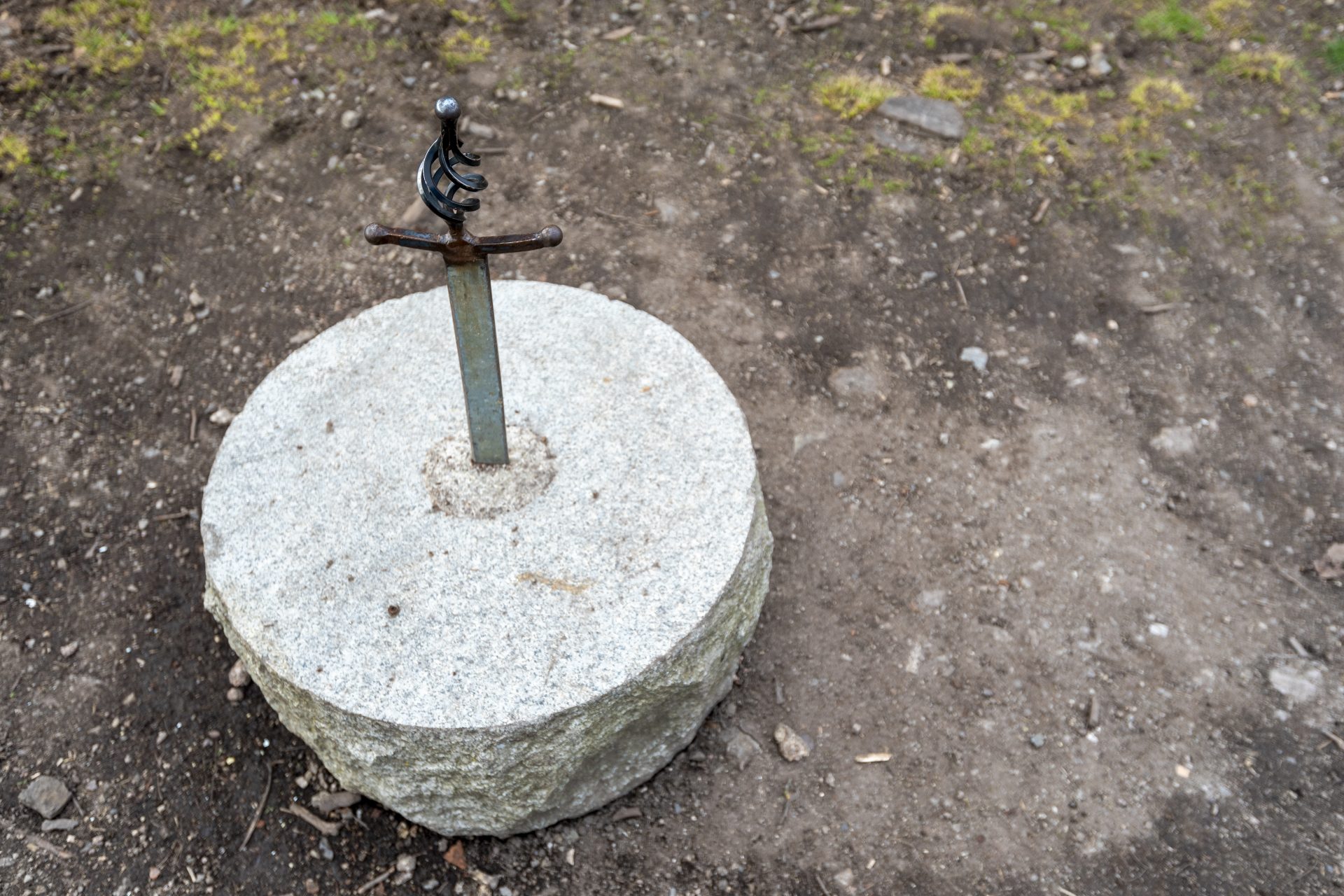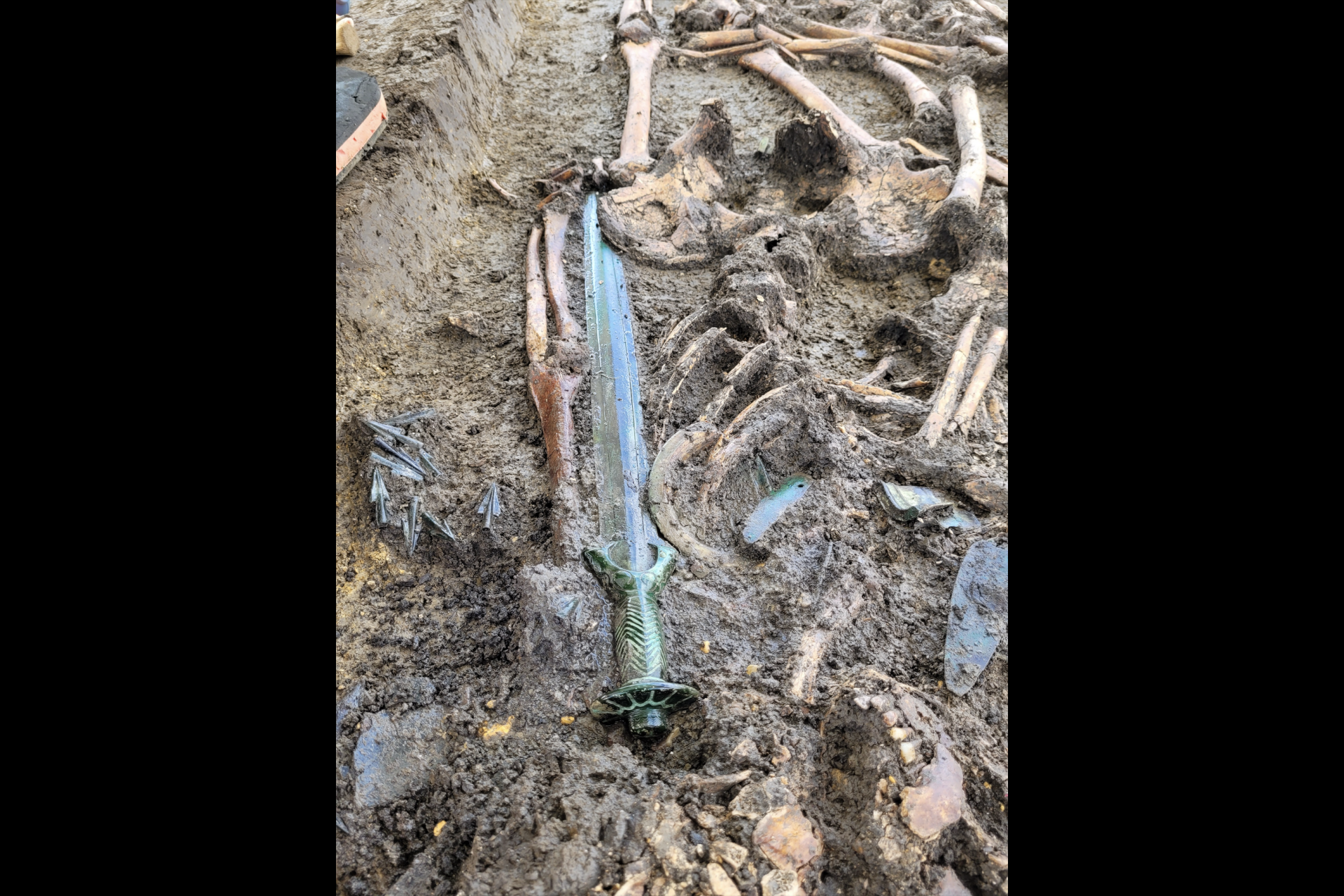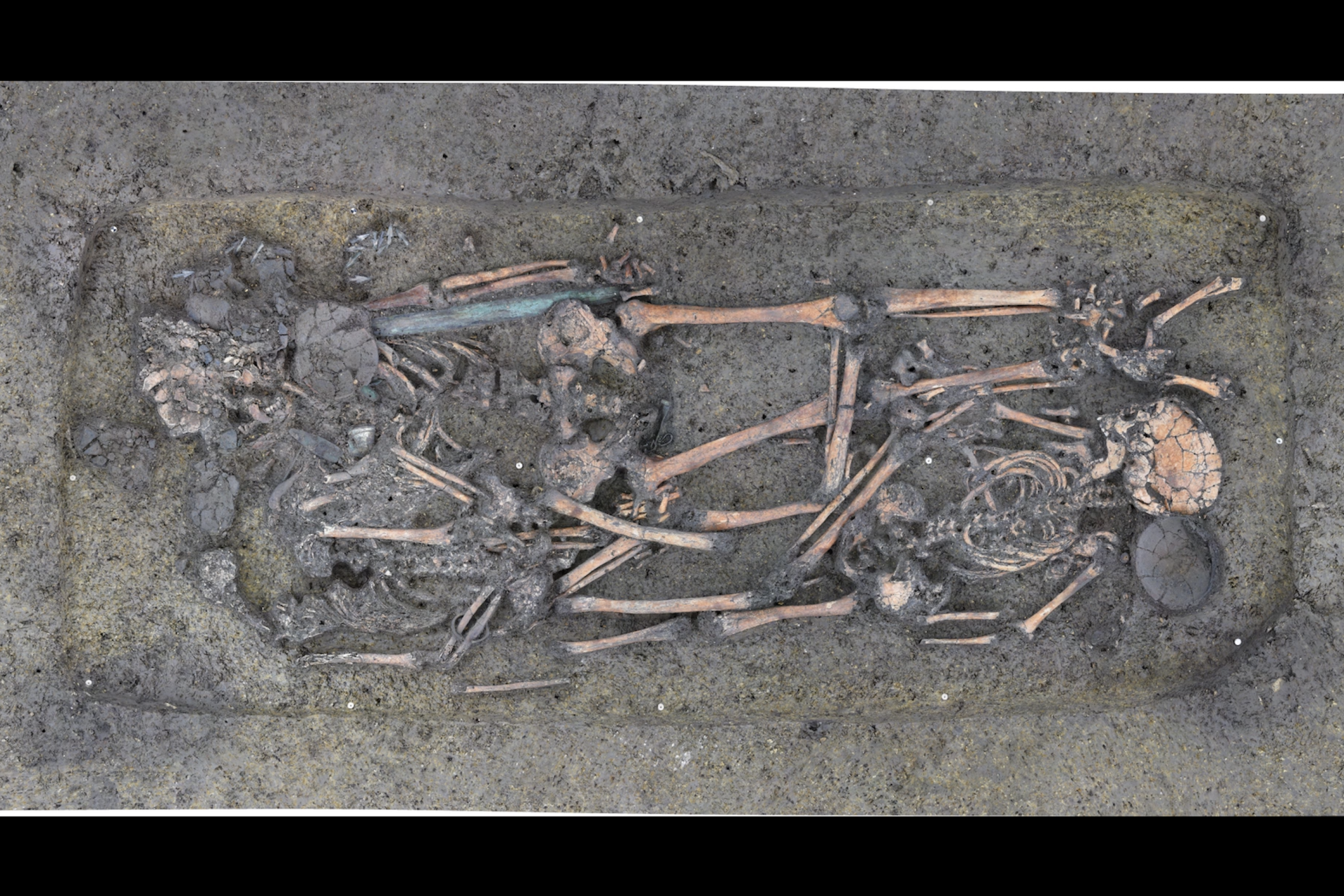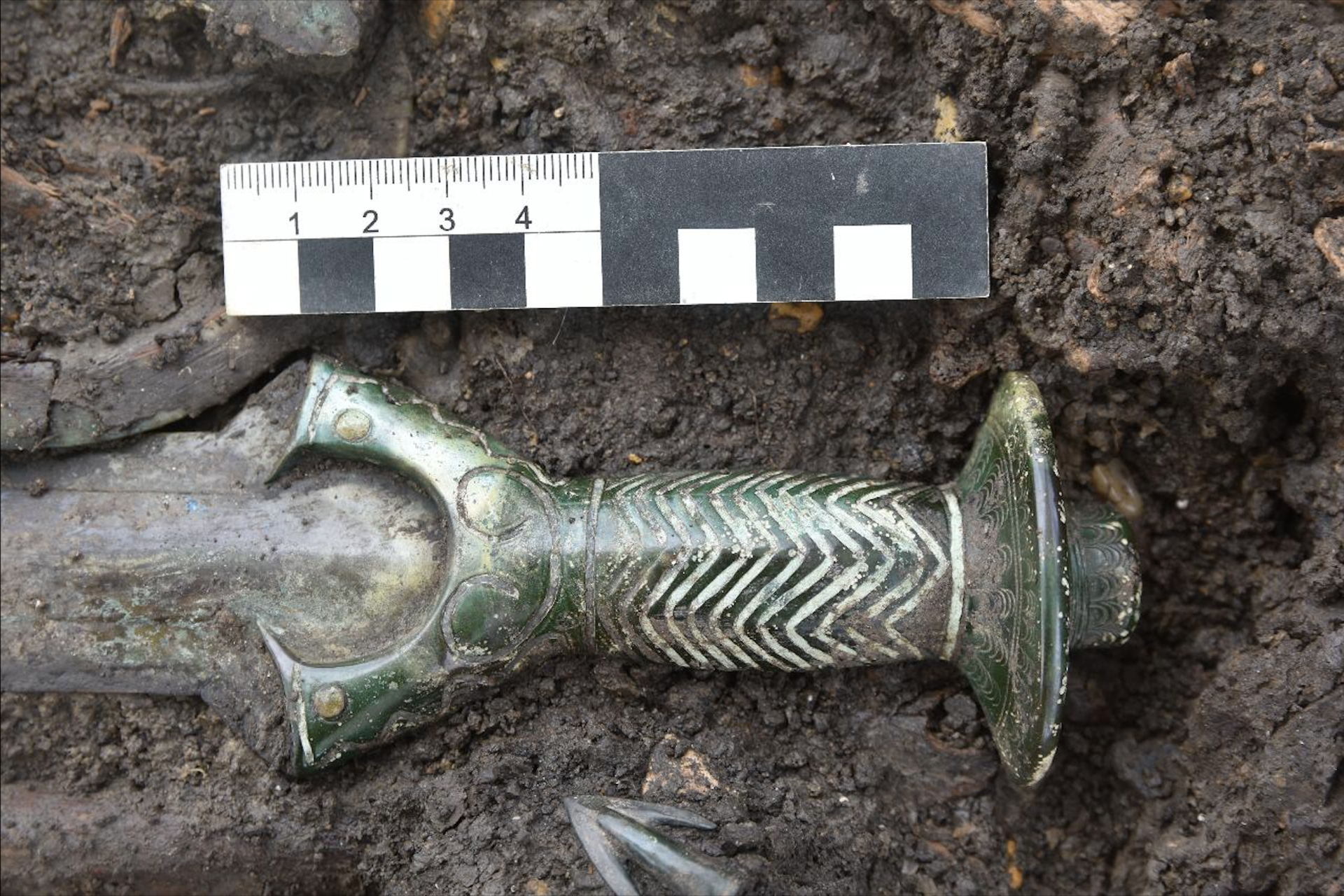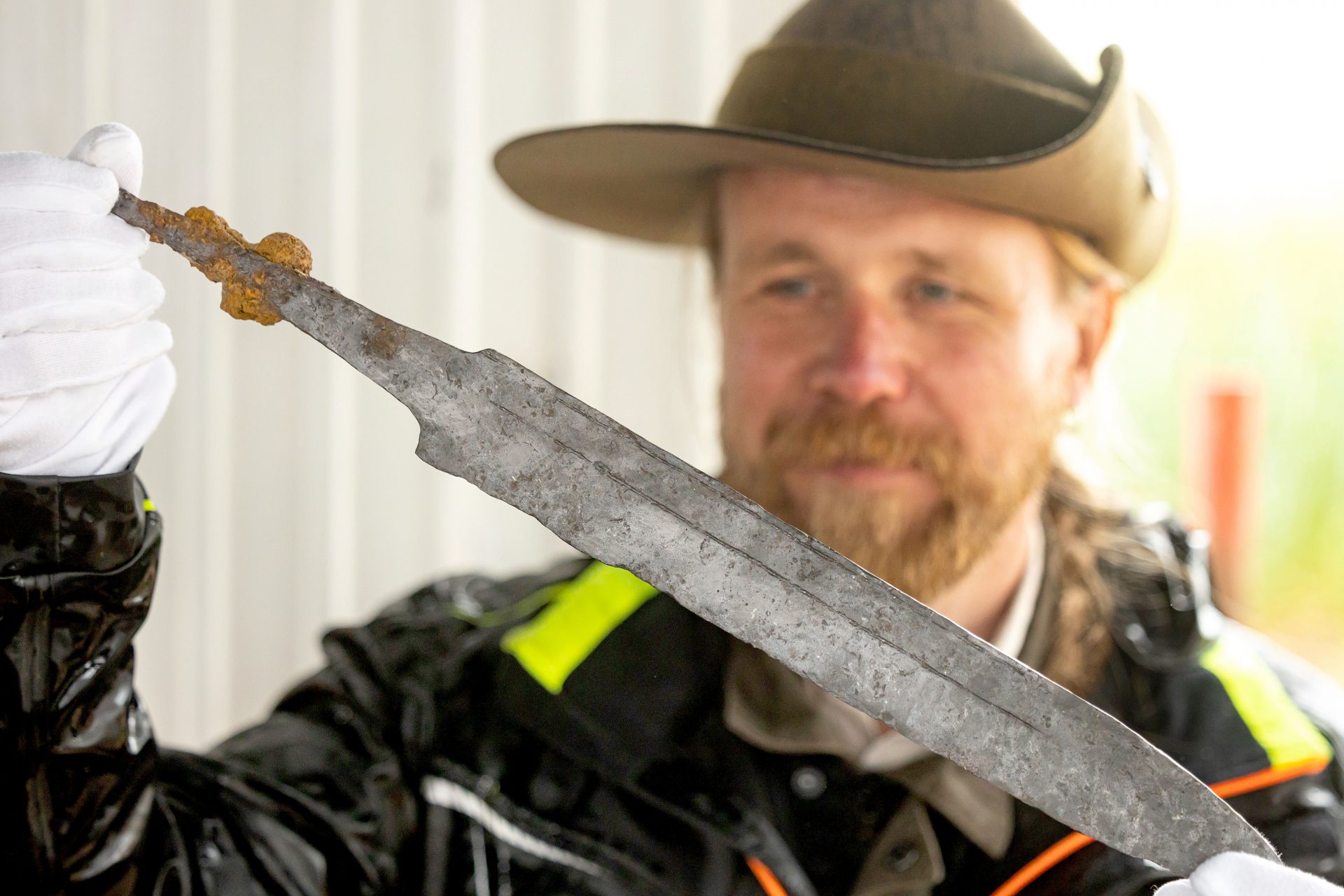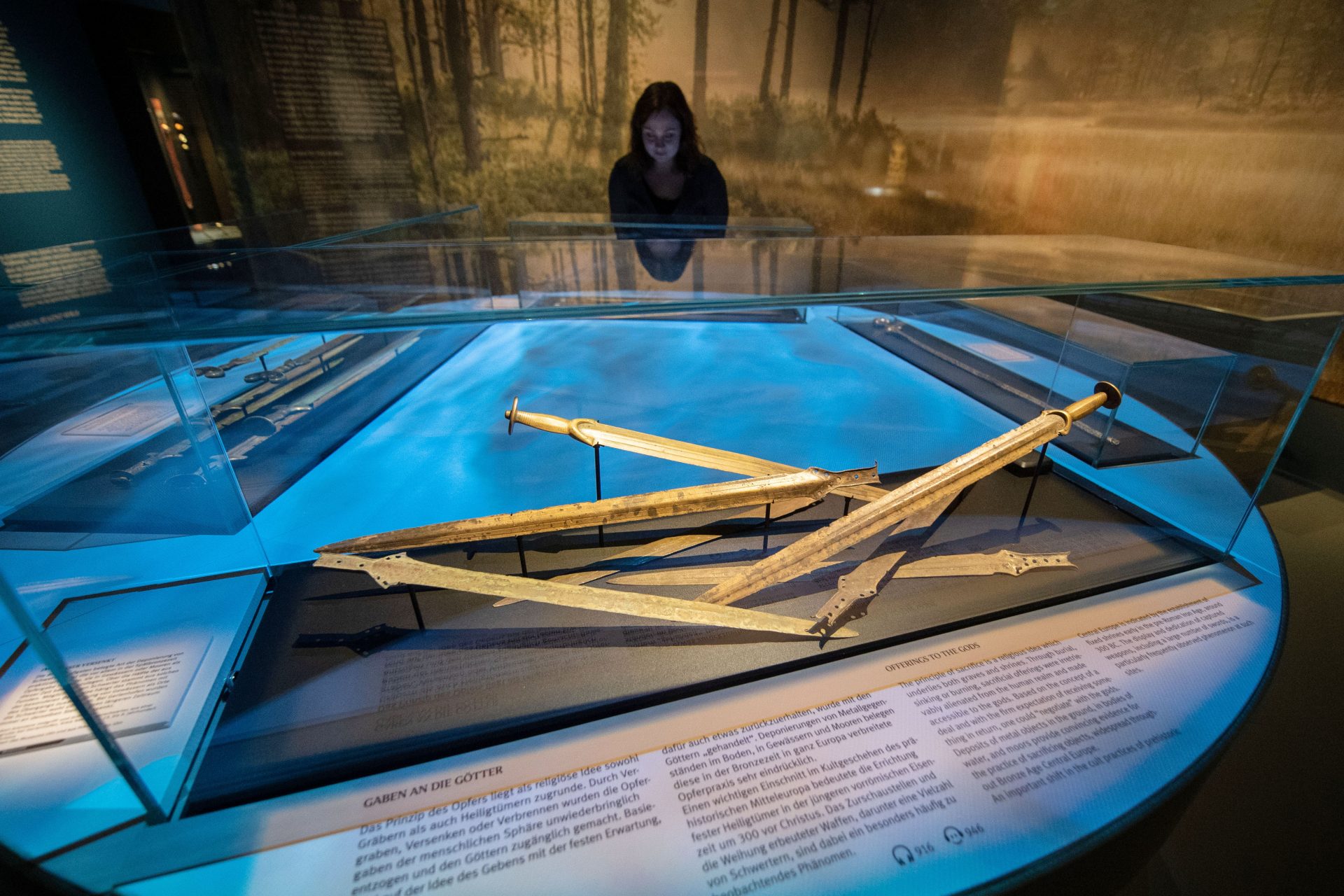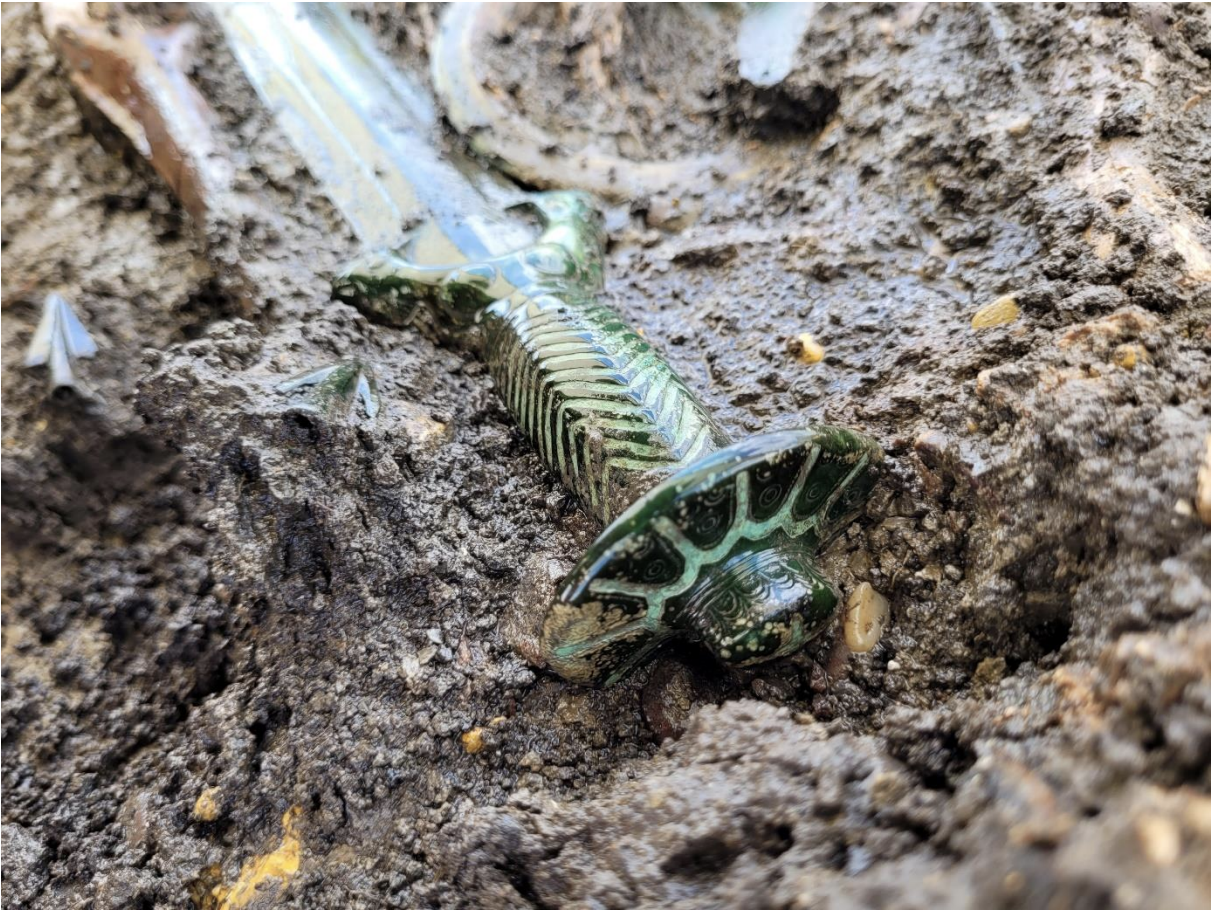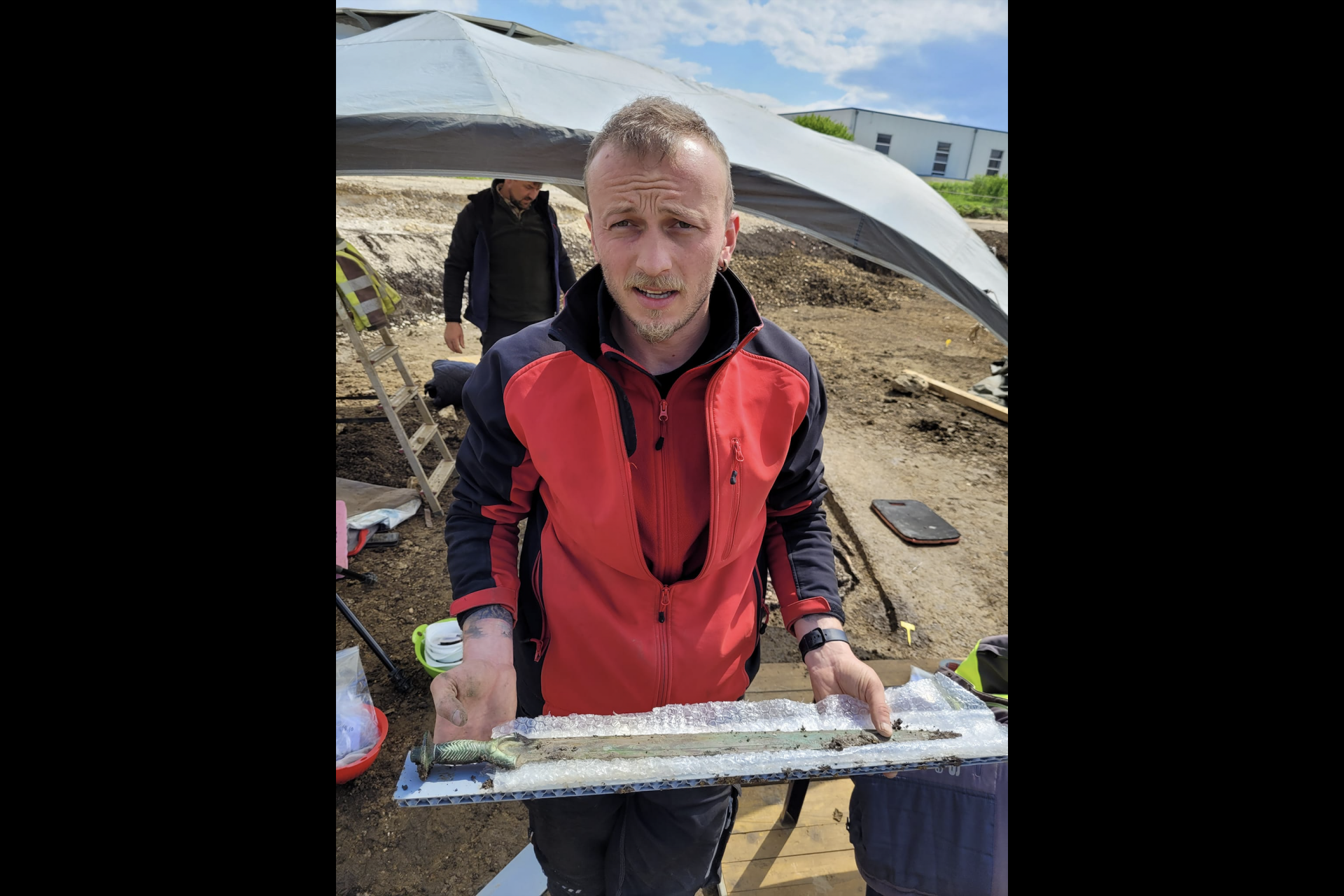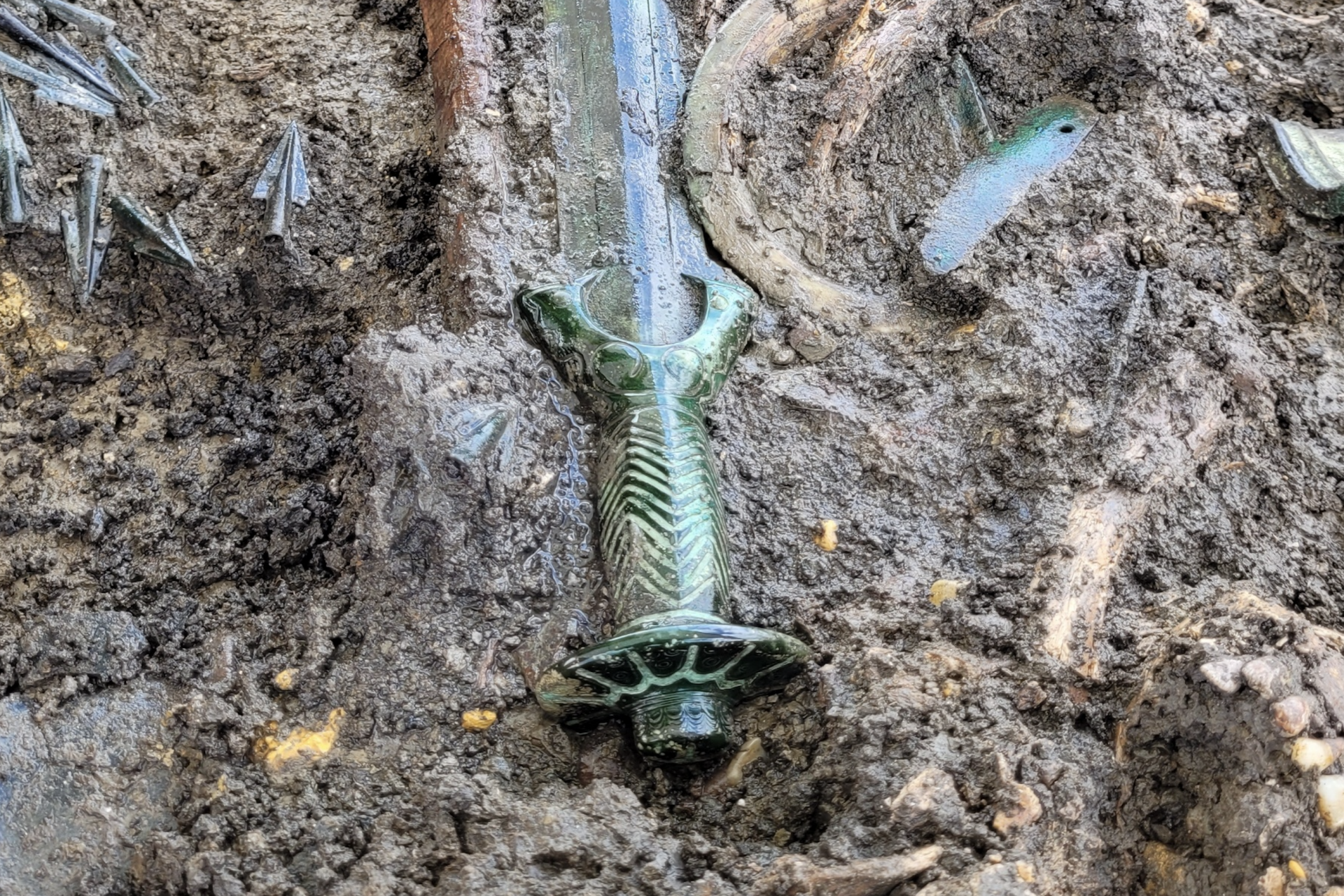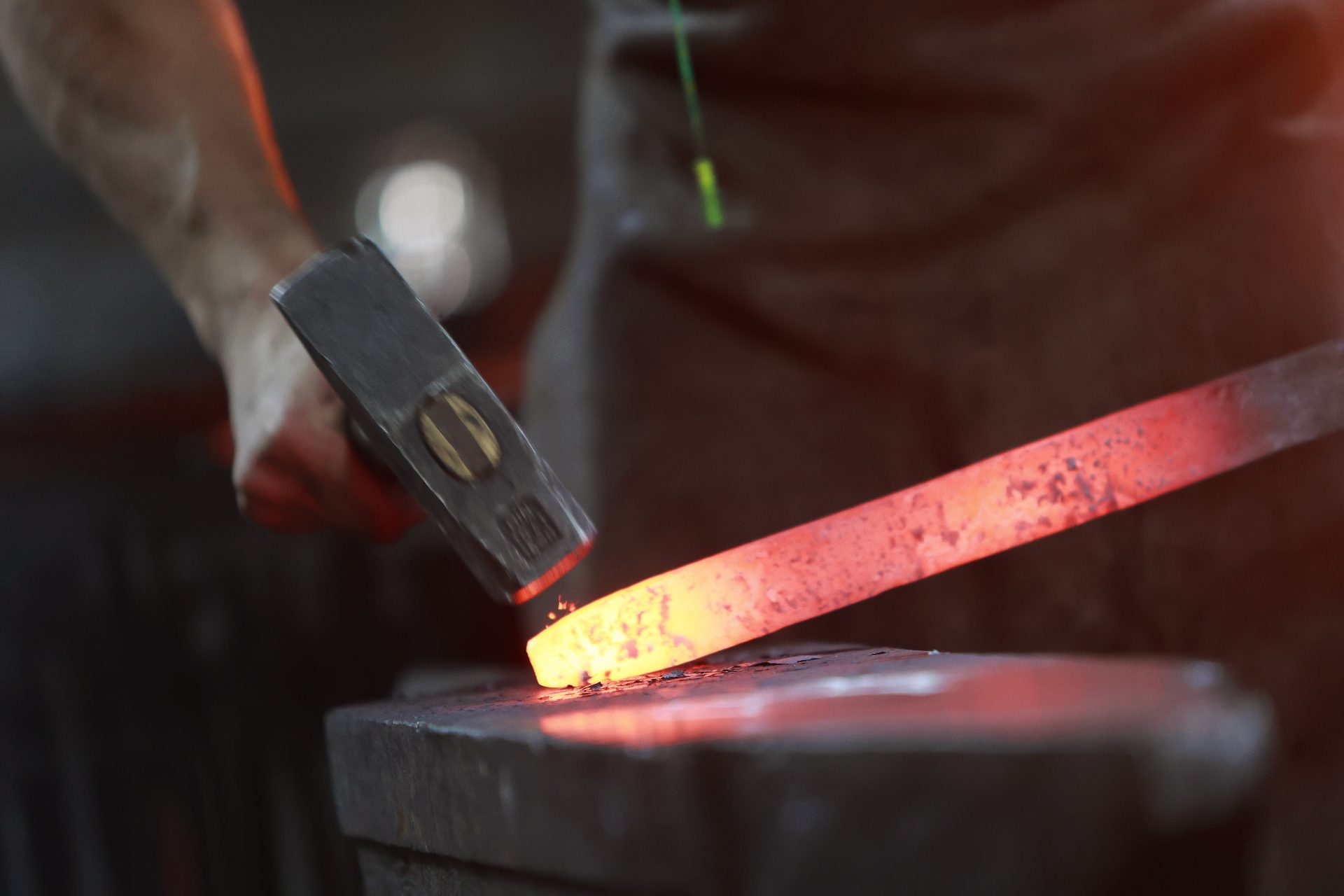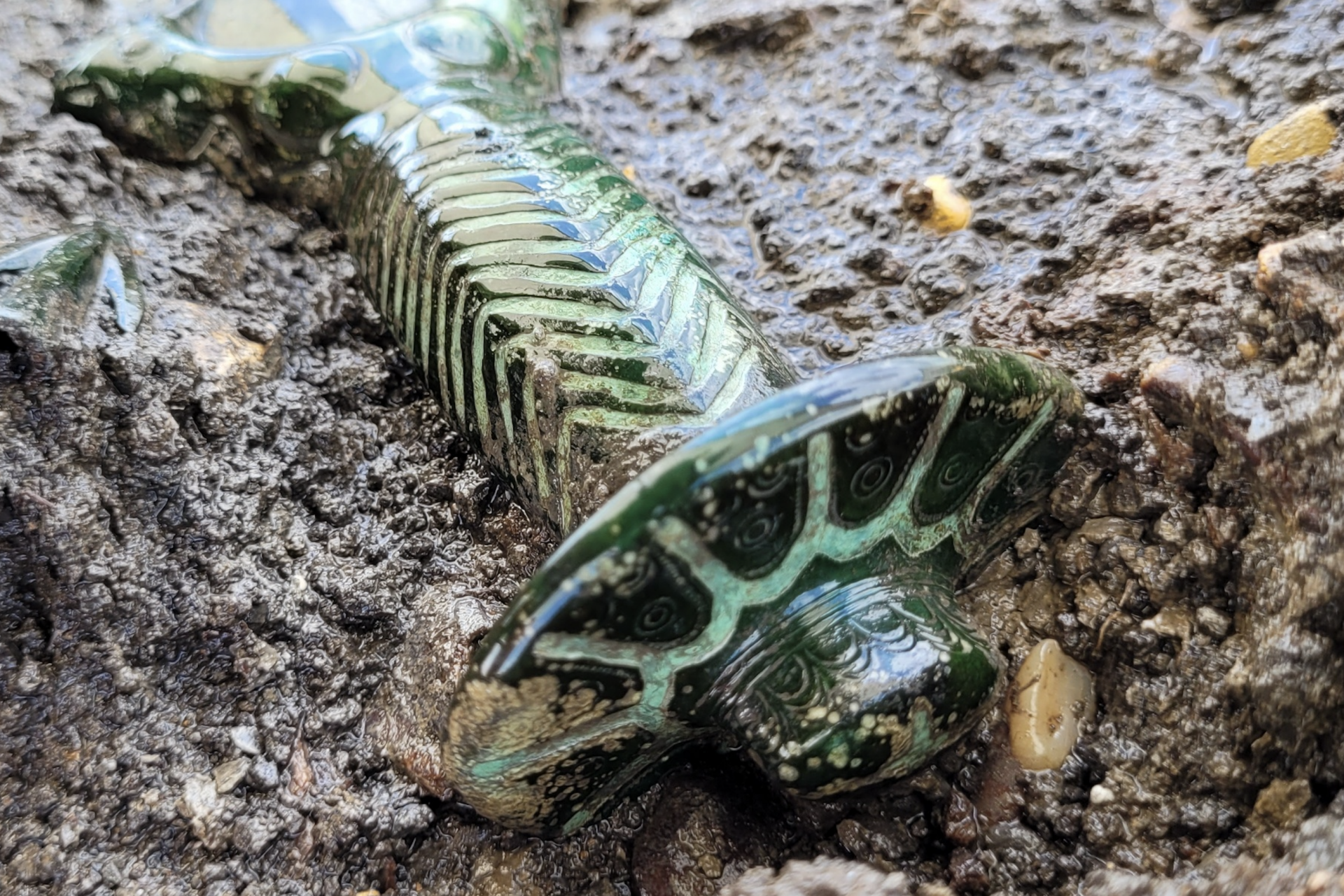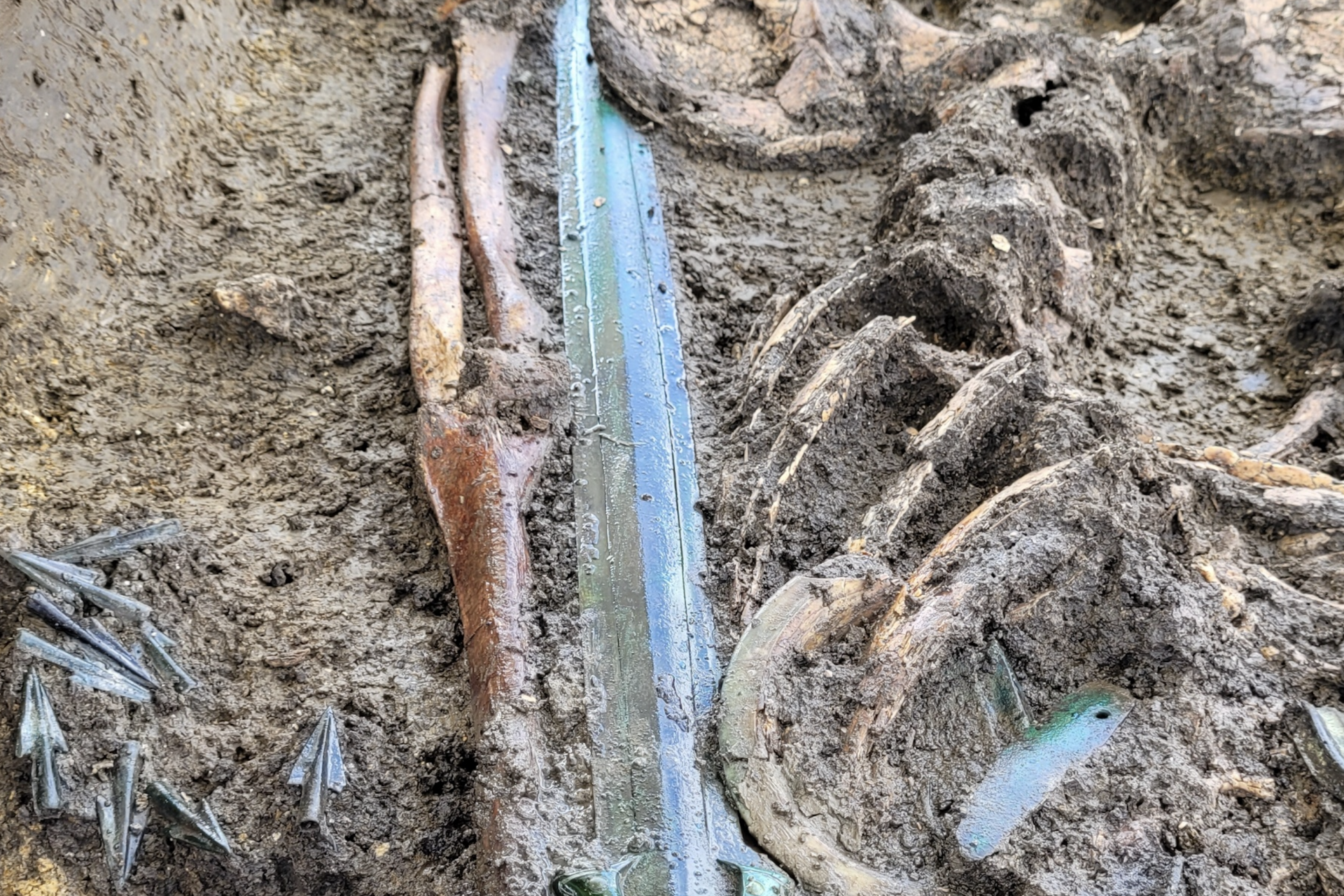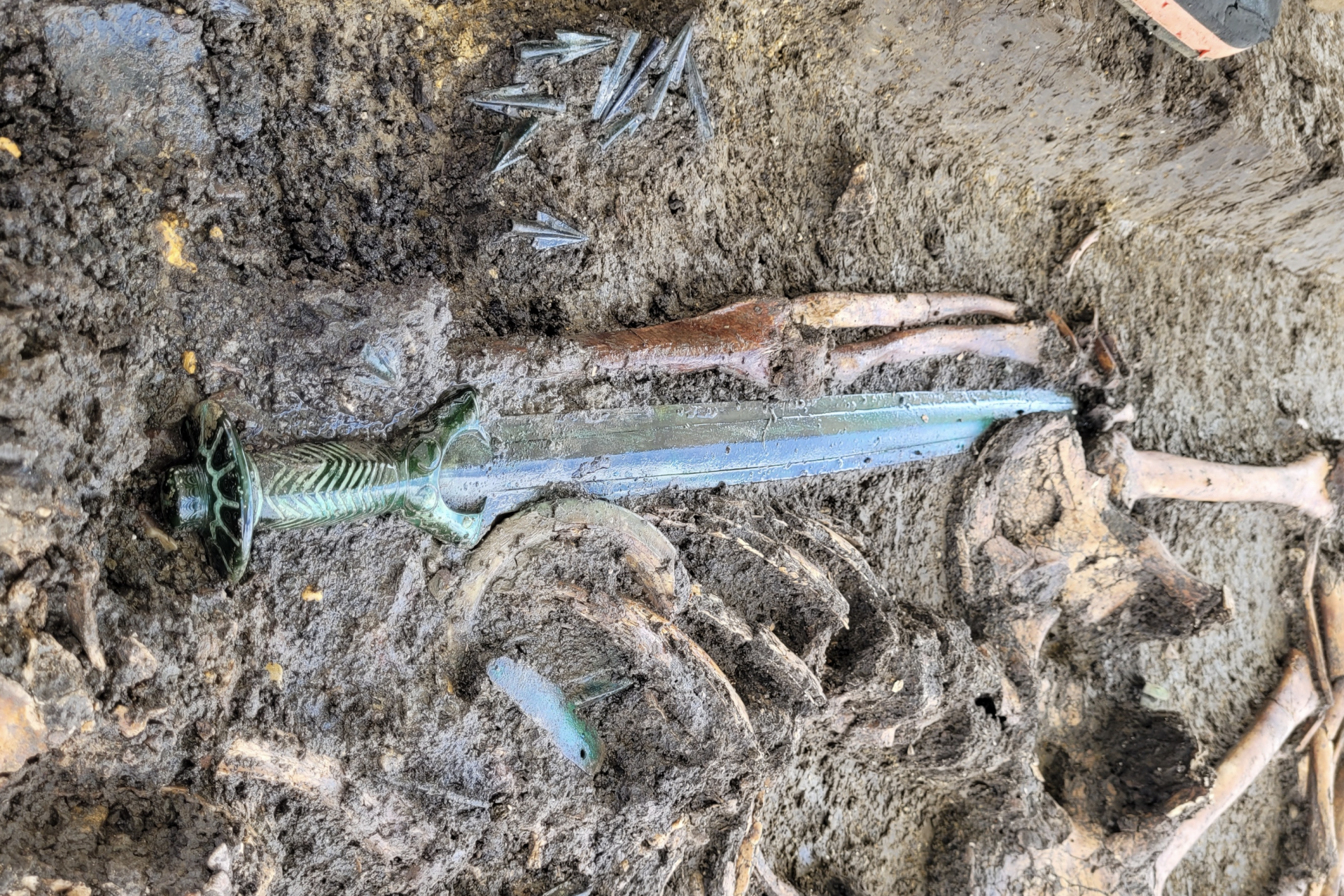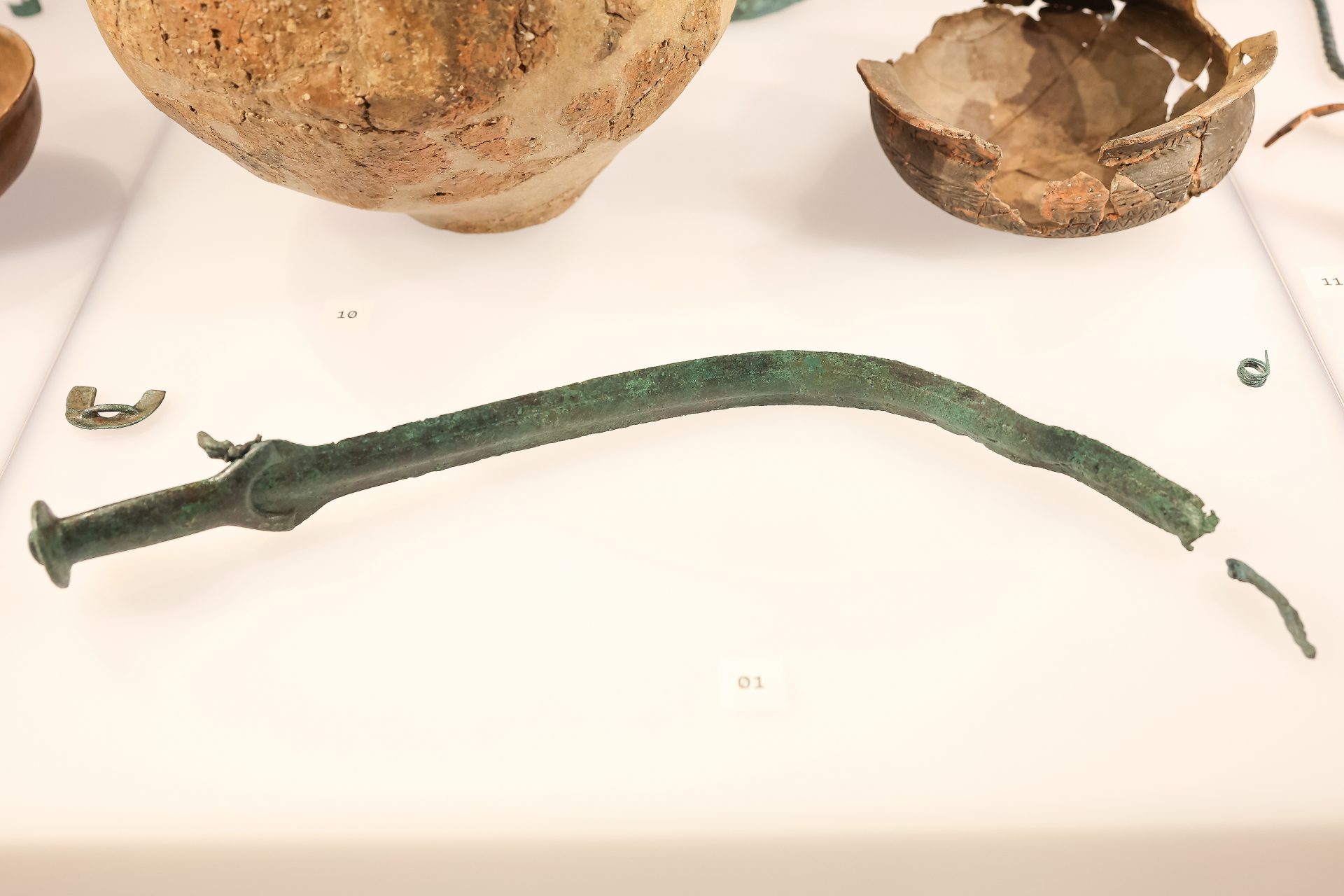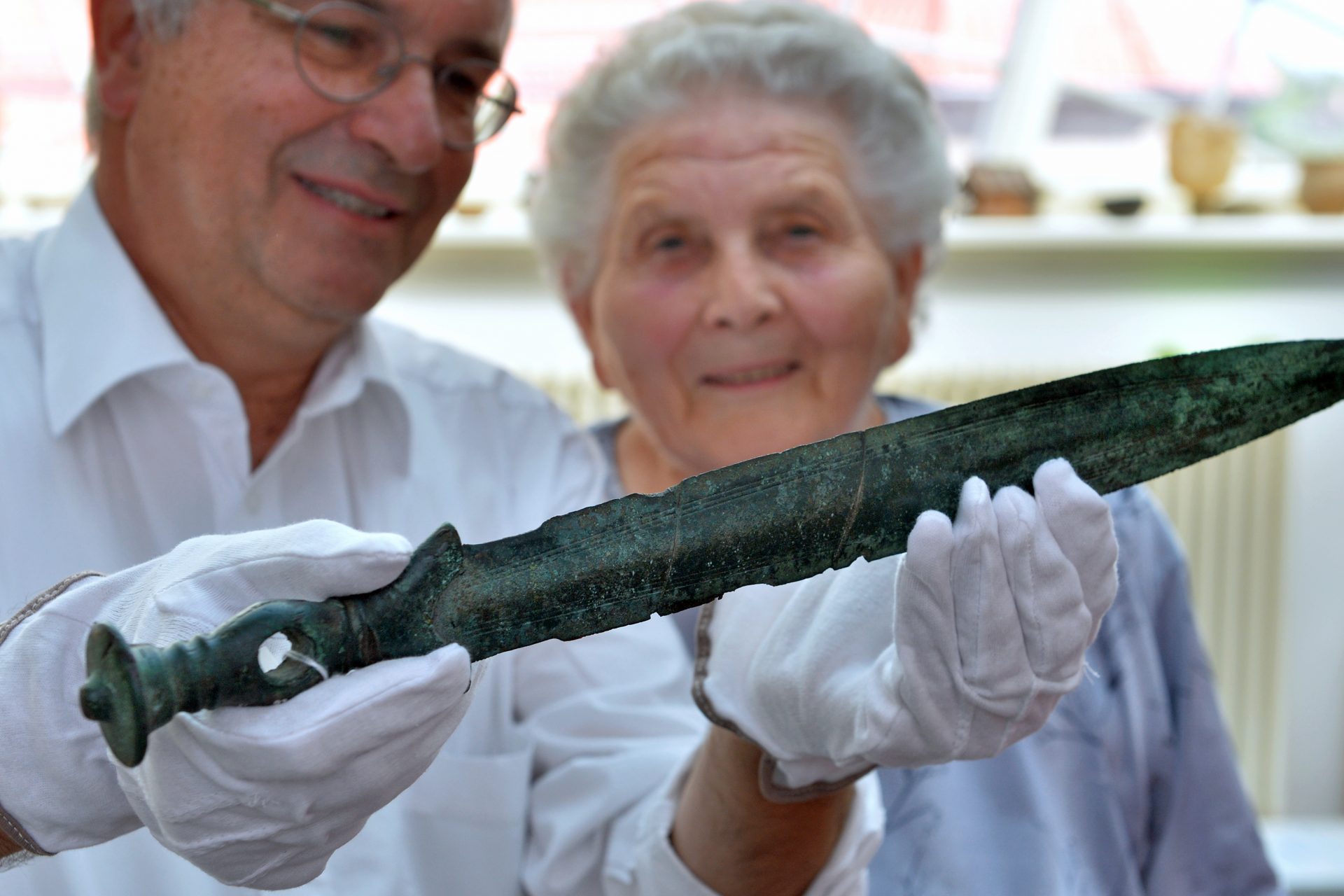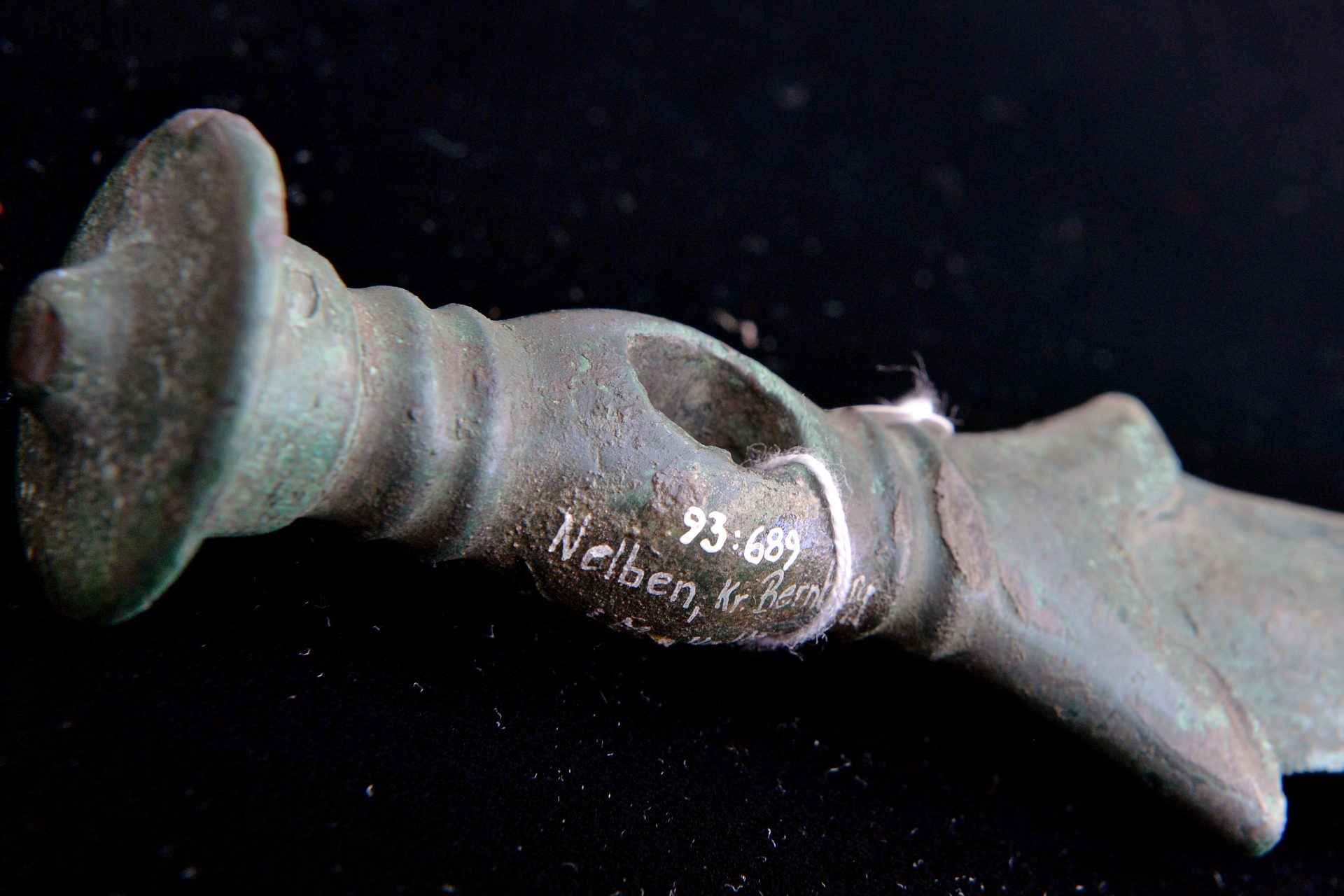An ancient sword discovered in Germany was so well preserved it looked brand new
Archeologists in Germany made an impressive discovery in June 2023. An ancient sword buried for thousands of years was unearthed in near-perfect condition. It was so well-preserved that it appeared brand new.
The 3,000-year-old bronze sword was found in the Bavarian town of Nördlingen, but the gravesite where it was unearthed only seemed to raise more questions about the sword.
Photo Credit: Archäologie-Büro Dr. Woidich/Sergiu Tifui
Discovered alongside the remains of a man, woman, and child, the ancient sword's discovery posed several questions about its origin and why it was so well preserved after three millennia.
Photo Credit: Archäologie-Büro Dr. Woidich/Sergiu Tifui
BBC News reported at the time that archeologists were unsure of how the remains they discovered were related to the sword and the other bronze artifacts found in the grave.
Photo Credit: Archäologie-Büro Dr. Woidich/Sergiu Tifui
Despite confusion over the gravesite, the discovery was a spectacular one since examples of well-preserved bronze swords from the time period are quite sparse.
Live Science reported that the archeological team that discovered the sword noted that finds from Bronze Age Germany are very rare because they have been looted over the centuries.
A statement from the Bavarian State Office for Monument Protection reported the sword was so well-preserved that "it almost still shines” according to several published translations.
Photo Credit: Archäologie-Büro Dr. Woidich/Sergiu Tifui
The statement also noted the archeological team believed the bronze sword was mainly meant to be used for slashing based on the ancient weapon’s center of gravity.
Photo Credit: Facebook @Dr.Woidich
Another interesting aspect of the sword was its complicated octagonal hilt, which looked to be made entirely of bronze. This was a rare and very complicated ancient hilt design.
Photo Credit: Archäologie-Büro Dr. Woidich/Sergiu Tifui
“Only skilled smiths could make octagonal swords. The handle, which has two rivets, was cast over the blade in a technique known as overlay casting,” Live Science noted.
Newsweek also reported that only the most skilled Bronze Age blacksmiths would have been able to make such a complex sword hilt, which raised more questions about its origins.
Photo Credit: Archäologie-Büro Dr. Woidich/Sergiu Tifui
According to the statement from the Bavarian State Office for Monument Protection, the sword had no visible signs of wear and tear or any visible cut marks, which suggested it was intended to be used for ceremonial purposes.
Photo Credit: Archäologie-Büro Dr. Woidich/Sergiu Tifui
"The sword and the burial still have to be examined further so that our archaeologists can classify this find more precisely,” the head of Bavaria’s State Office for Monument Protection Mathias Pfeil said in a statement at the time, according to Newsweek.
Photo Credit: Archäologie-Büro Dr. Woidich/Sergiu Tifui
“But it can already be said that its condition is exceptional. A find like this is very rare," Pfeil added, which was quite the understatement considering how few other examples the world currently has of swords similar to the one found in Nördlingen
Live Science reported that researchers only know of two other octagon sword examples from the time period of the sword discovered by archaeologists in Nördlingen.
One of the other examples also hailed from Germany while the second was discovered in Denmark. It was unknown at the time where the new sword had been cast, a fact that still appears to be the case.
More for you
Top Stories



